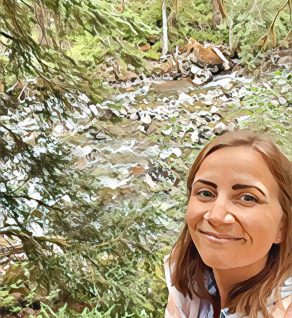San Francisco is an incredibly rich city of literary sites and so much of that is based on the Beat Generation. Whether they knew it or not at the time, the group of writers and poets who lived in post-war San Francisco in the 1950s created an entire literary subculture. Most of the local haunts once frequented by the likes of Allen Ginsberg, Jack Kerouac, Neal Cassaday, and Lawrence Ferlinghetti are still thriving today. Use this guide to find the best Beat Generation literary sites in San Francisco for yourself.
THE BEST BEAT GENERATION LITERARY SITES IN SAN FRANCISCO
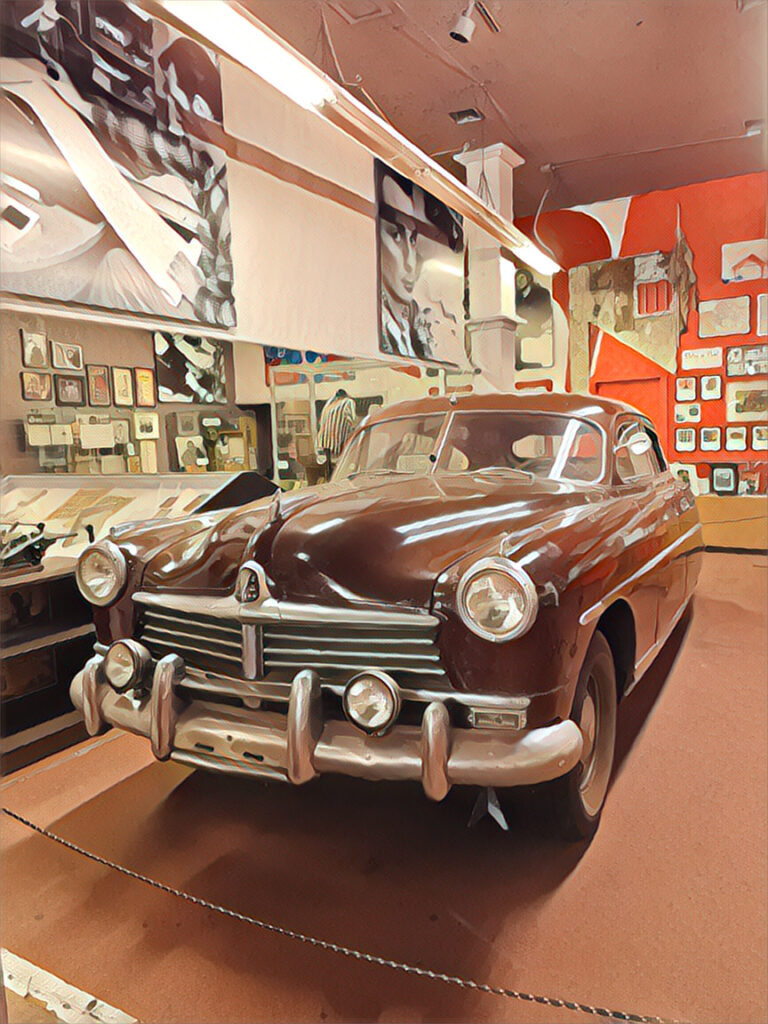
The Beat Museum
540 Broadway
Small but mighty, The Beat Museum is a great place to begin your Beat Generation pilgrimage. Using rare books, personal items, old letters, manuscripts, and even a car from 2012’s film adaptation of On the Road, the one-room museum introduces visitors to who the Beats were, who they were influenced by, and who stood by their sides through it all (women!). Items not to miss include Allen Ginsberg’s annotated copy of Howl, first editions of Jack Kerouac’s books, and early pocket-backs from City Lights.
In addition to the exhibits, The Beat Museum sells a variety of books and records (I particularly liked the old claw-foot bathtub full of books). The museum also hosts author conversations and film screenings.
The Beat Museum is open Thursday-Monday from 10am-7pm; admission to the museum varies but general admission is $8.
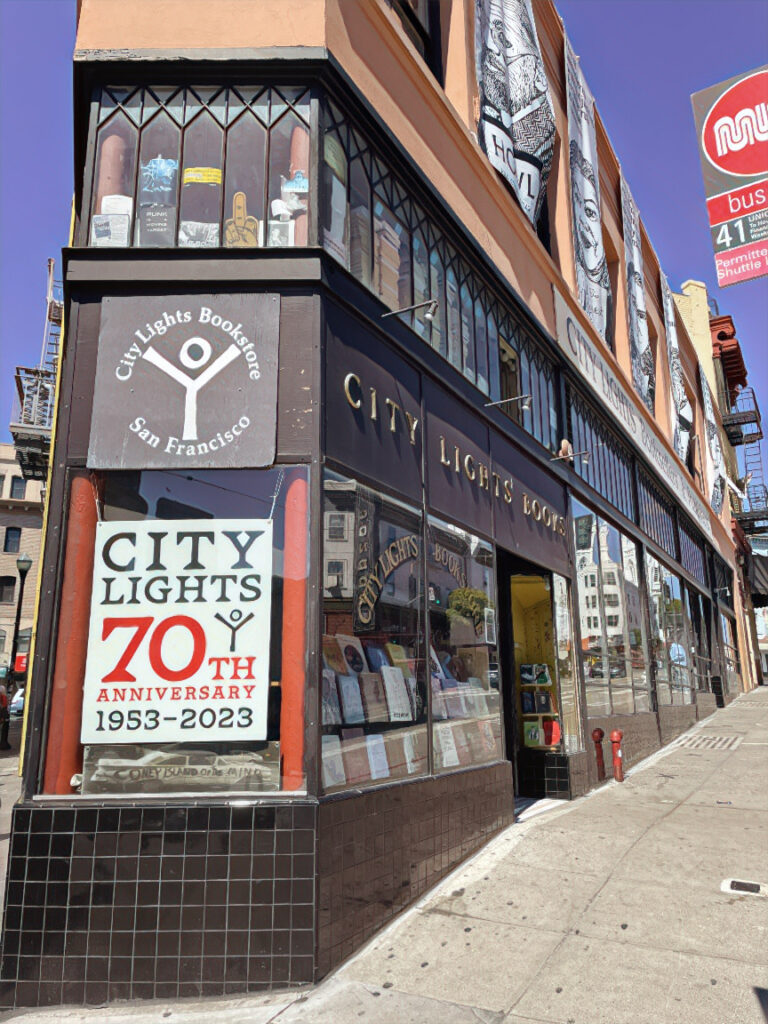
City Lights Bookstore
261 Columbus Ave.
What began as a simple all-paperback bookstore in 1953 has evolved into one of the country’s most renowned bookshops and publishing houses 70 years later. Co-founded by Lawrence Ferlinghetti, City Lights made headlines when Ferlinghetti was arrested for publishing Allen Ginsberg’s poem, Howl, and charged with obscenity in 1957. Ferlinghetti and Ginsberg would win the First Amendment trial in court and the fanfare City Lights gathered only continued to grow over time.
The store’s selection has grown too. It now includes both paperback and hardcover books in genres including fiction, history, politics, philosophy, spirituality, and more. The second floor offers a beautiful poetry room overlooking Columbus Ave. The basement houses a robust children’s section. The staff are knowledgeable and offer up a variety of “staff picks” throughout the store. City Lights also hosts a number of events such as author conversations and poetry readings. Do not miss this beloved bookstore on your next visit to San Francisco!
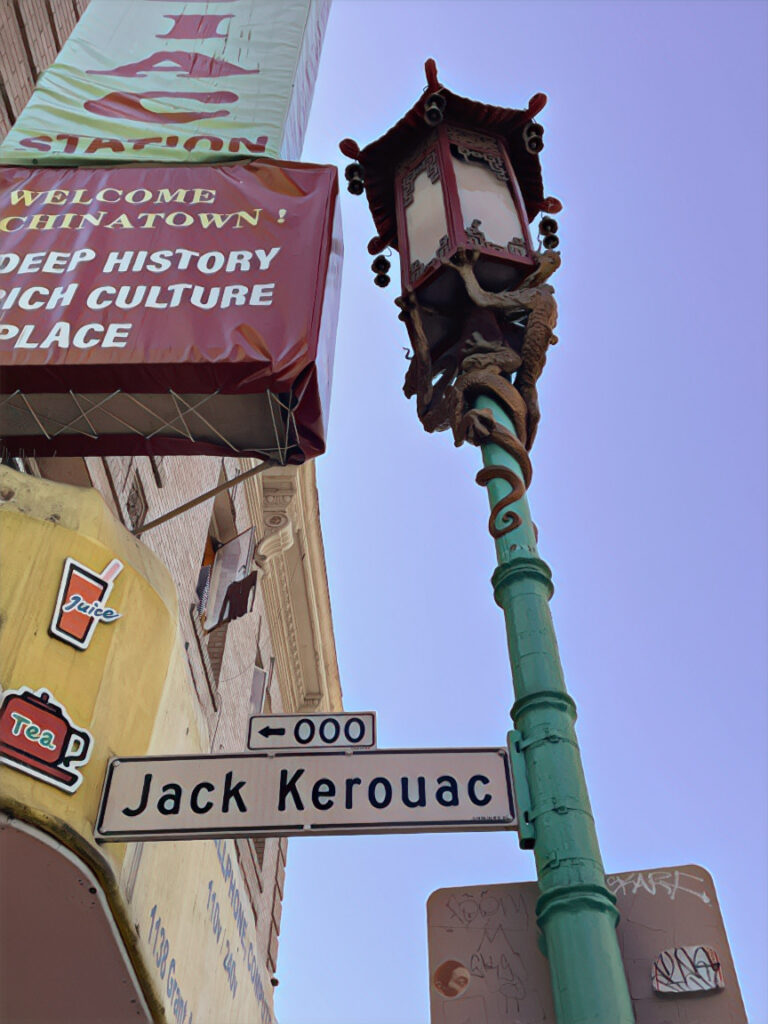
Jack Kerouac Alley
(between City Lights and Vesuvio)
Once known as Adler Alley, this stretch between City Lights Bookstore and Vesuvio Café was officially named Jack Kerouac Alley in 1988 after Lawrence Ferlinghetti campaigned to have an assortment of streets in San Francisco renamed after writers and poets. In 2007, the alley received a makeover when it was widened, repaved, and made pedestrian-only. Embedded in the ground you’ll find quotes from significant authors such as Maya Angelou and John Steinbeck.
A unique feature about this alley is that it separates North Beach from Chinatown so as you walk the alley from Columbus Ave. toward Grant Ave. the quotes gain Chinese characters half way through. Find the official Jack Kerouac Alley street sign on the Grant Avenue end.
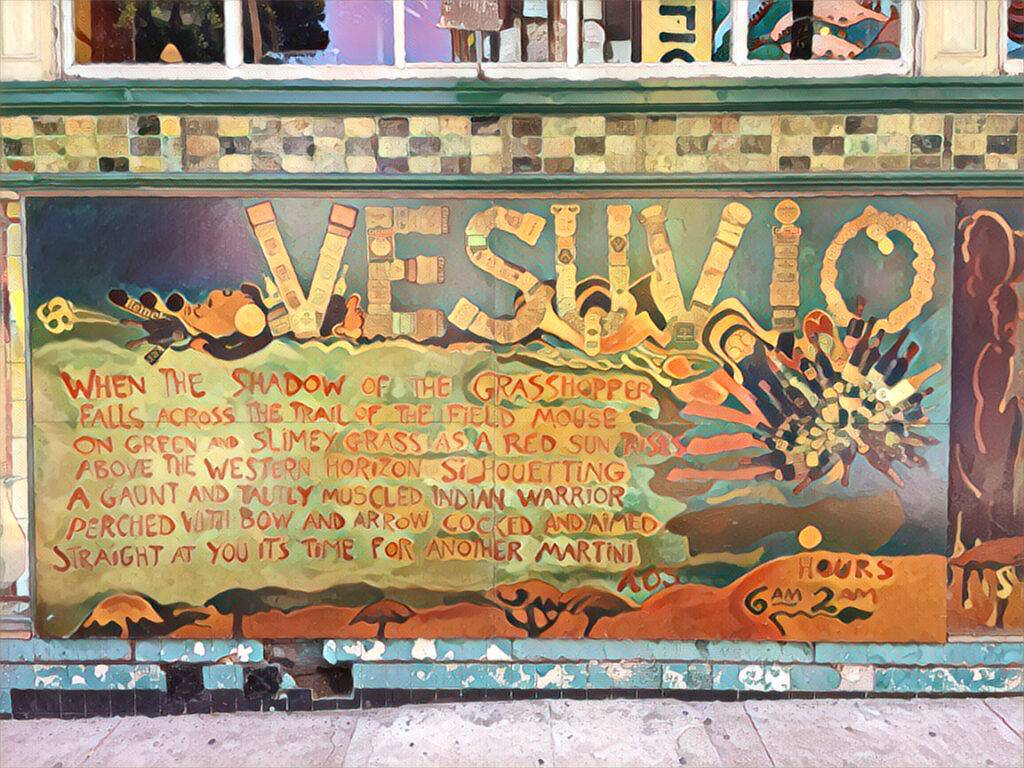
Vesuvio Cafe
255 Columbus Ave.
A popular hangout for Beats, Vesuvio Café opened as a bar in the North Beach neighborhood in 1948. In the 50s, it began attracting the likes of Lawrence Ferlinghetti (who owned the adjacent City Lights Bookstore), Jack Kerouac, Neal Cassady, and neighborhood resident Allen Ginsberg. In 1954, Ginsberg even wrote a poem called “In Vesuvio’s Waiting for Sheila.”
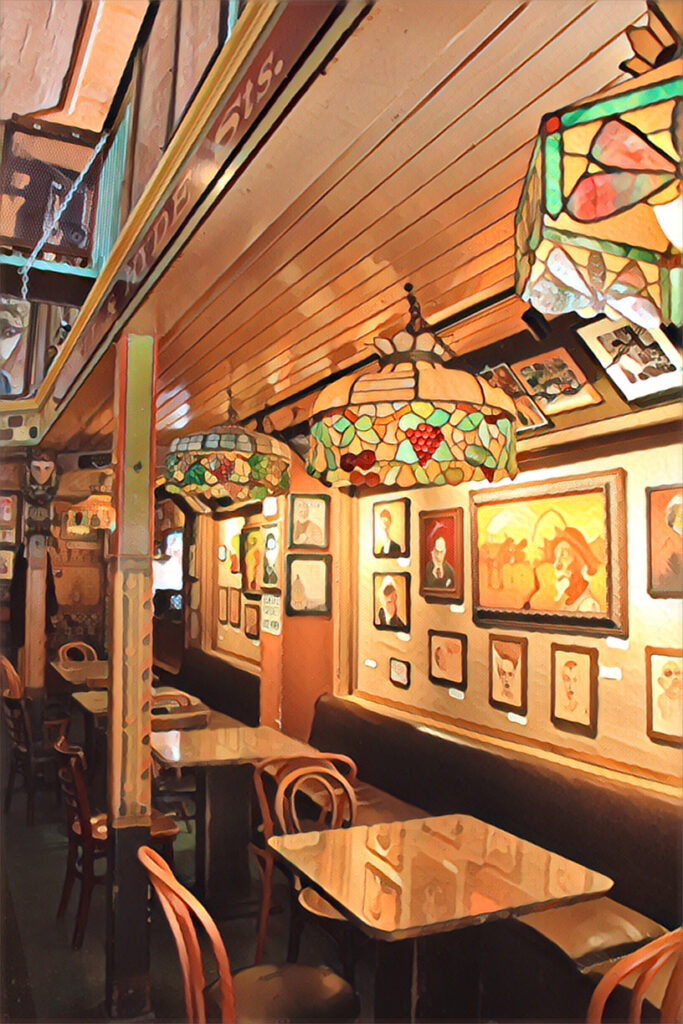
And then there was that storied night when Jack Kerouac was supposed to head south to Big Sur to meet up with Henry Miller and instead just called him every couple of hours from the bar’s payphone to delay his arrival (he never made it). Grab a beer and admire all of the memorabilia and art work on the walls or head upstairs for big windows and balcony seating overlooking Jack Kerouac Alley. These walls can talk.
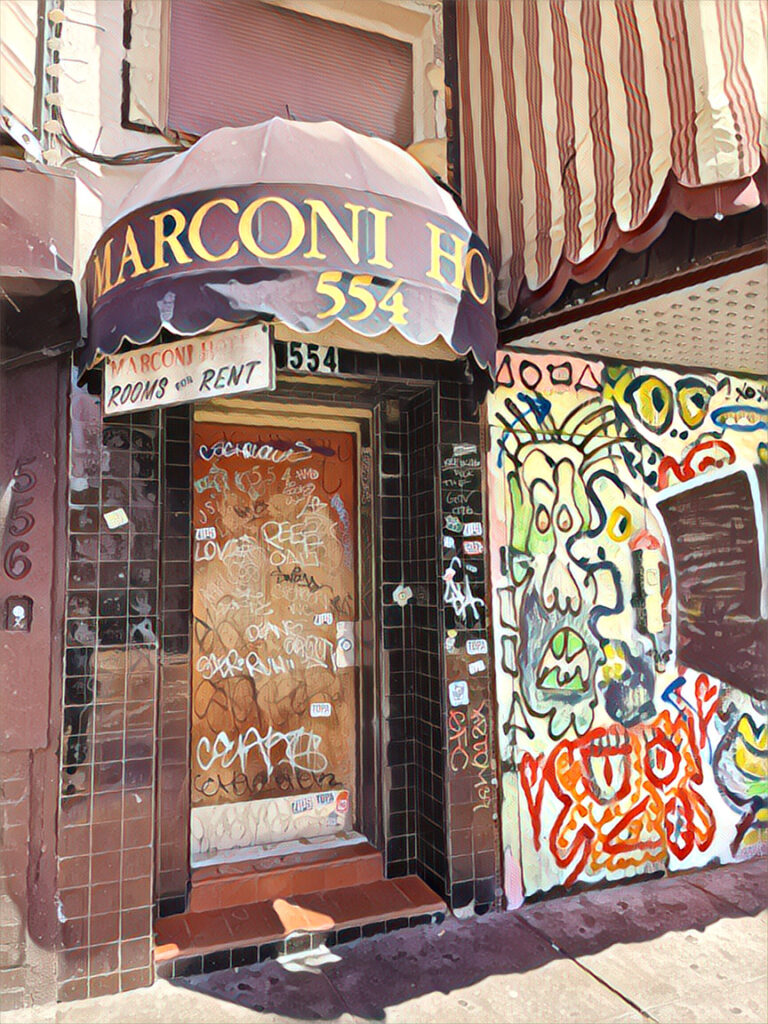
Marconi Hotel
554 Broadway
While the doorway is now covered in graffiti, the awning and “Rooms for Rent” sign still hang outside the door at 554 Broadway. When Allen Ginsberg arrived in San Francisco in 1954, he rented a room at the Marconi for $6 a week. He would stay for close to two months.
Allen Ginsberg’s Apartment
1010 Montgomery Street
Allen Ginsberg moved to an apartment he shared with fellow poet (who he fell in love with and became his life-long partner), Peter Orolovsky, on Montgomery Street just to the east of the North Beach neighborhood. It was the summer of 1955. His front room contained personal artifacts: A victrola, letters and essays of Ezra Pound, books, and a watercolor portrait of Ginsberg in his army-surplus jacket by Robert La Vigne.
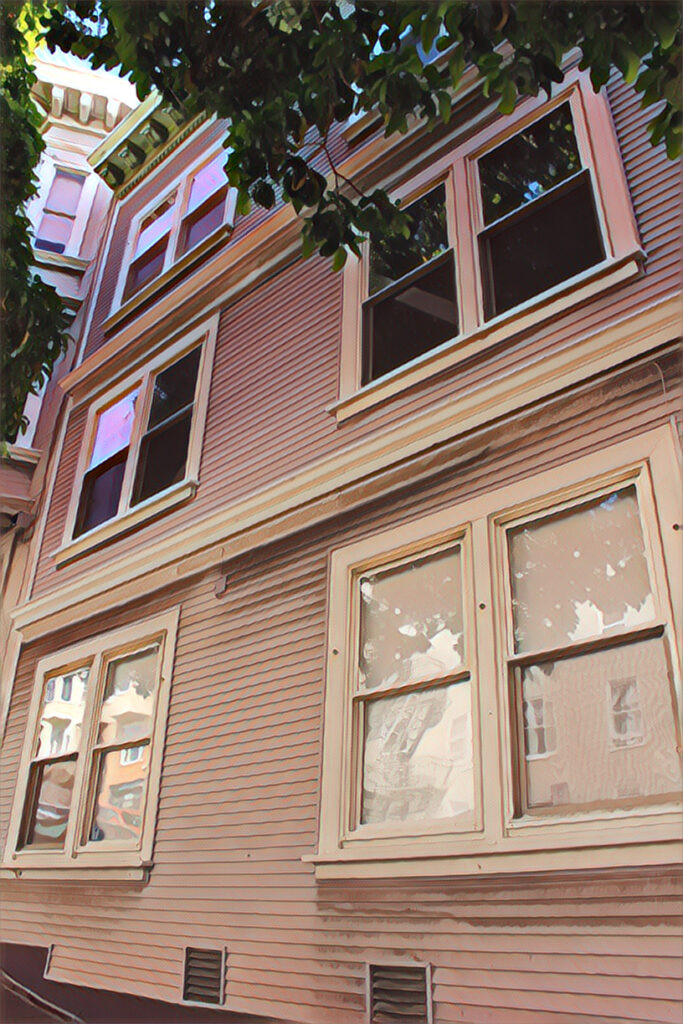
Ginsberg spent that summer writing Howl Part 1, a poem that would bring fame and a First Amendment trial following the poem being published in 1956 by Lawrence Ferlinghetti of City Lights Bookstore. The trail gained so much attention that by the time it ended (and ruled in the favors of Ginsberg and Ferlinghetti), they were well known across the country.
Imagine that the poem that was created in this nondescript apartment flat laid part of the foundation of what would become the Beat Generation’s identity.
Neal and Carolyn Cassady House
29 Russell Street
Neal and Caroyln Cassady lived in this small home in the Russian Hill neighborhood in the early 1950s. By 1951, the pair had already had three children together. Cassady was 26. Jack Kerouac came to live with them in the small attic bedroom for a while in 1952 and during this time began to write Visions of Neal which later evolved into parts of On the Road and Visions of Cody.
By 1953 the Cassady’s moved to San Jose and never again lived as a family in San Francisco. However, after Neal’s and Carolyn’s divorce, he was back in the city sharing a room with Allen Ginsberg in Charles Plymell’s apartment at 1403 Gough Street for a brief period in the fall of 1963.
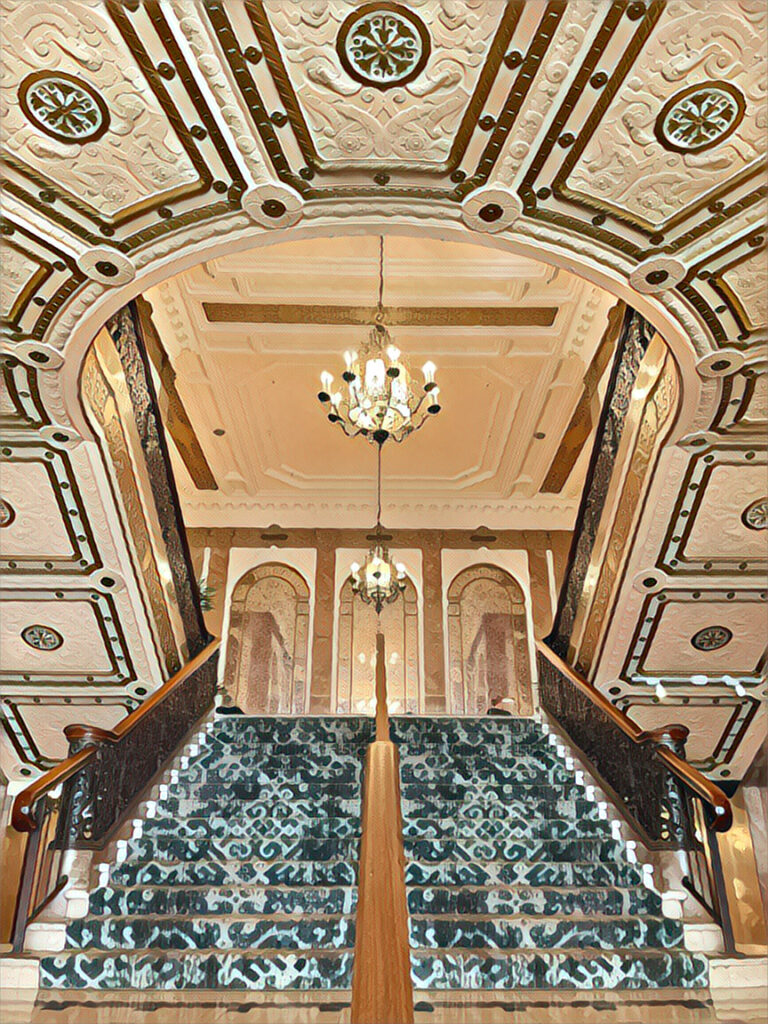
Sir Francis Drake Hotel (now the Beacon Grand)
450 Powell Street
The Sir Francis Drake Hotel–renamed the Beacon Grand in 2022–opened in 1928. It has dazzled guests for nearly 100 years with luxury. The hotel opened with an indoor golf course, cold tap water and radios in every room–new inventions that were still dizzying to most.
On a peyote-driven hallucinatory night in the 1950s, Ginsberg found inspiration and wrote the second part of Howl while in a now-defunct cafeteria at the base of the hotel. He had said that the hotel had appeared like the “robot skullface of Moloch.” Was it perhaps the two-story lobby staircase (plus the drugs) that made him think this? He spent the night wandering the streets muttering “Moloch, Moloch” to himself before writing Howl II in nearly one sitting.
Caffe Trieste
601 Vallejo Street
A legendary café in the heart of North Beach, Caffe Trieste opened in 1956 as the first espresso-based coffee shop on the West Coast. Since then it’s attracted a whole world of bohemia–writers, poets, artists, and those of the Beat Generation. Lawrence Ferlinghetti was a regular customer throughout his life.
Allen Ginsberg, Jack Kerouac, Neal Cassady, Alan Watts, and Bob Kaufman all spent time at Trieste. And it’s been known that Francis Ford Coppola wrote much of the Godfather screenplay while at Caffe Trieste.
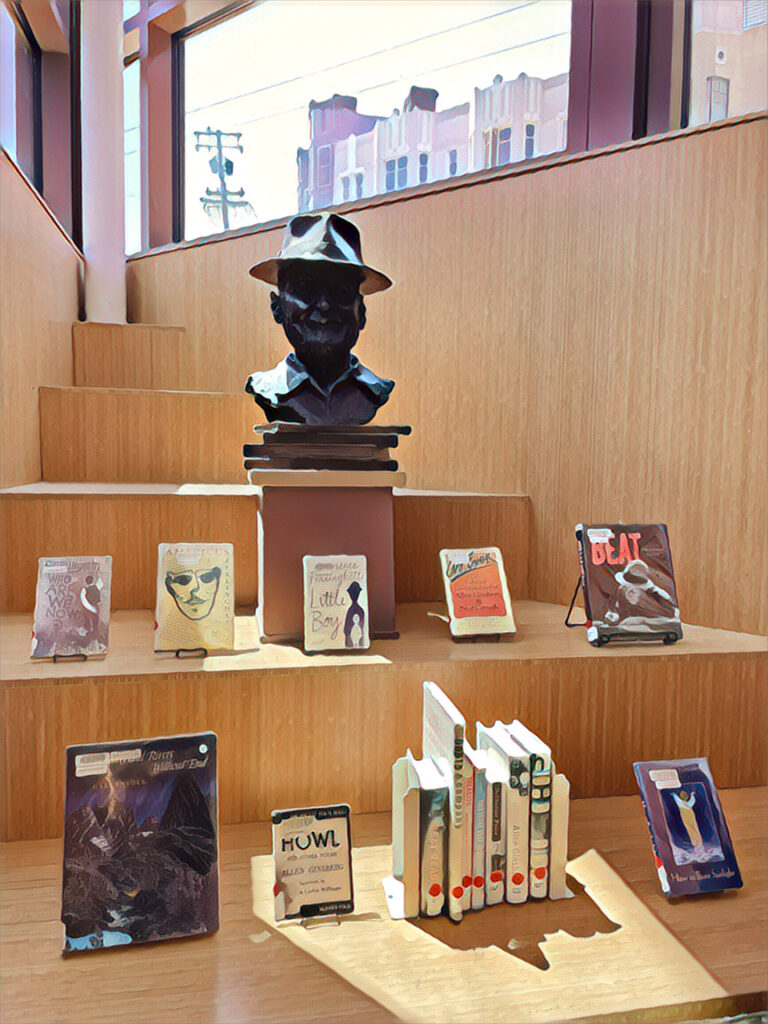
North Beach Public Library
850 Columbus Ave.
The only library in the city (or maybe anywhere) to house its own Beat collection of books, the North Beach Library offers a couple hundred books and documents by all kinds of Beat Generation writers–not just the major players like Kerouac and Ginsberg. When the collection was proposed by community leader, Jane Winslow, in 1995 Lawrence Ferlinghetti himself promised to donate material to the collection. There is a small bronze bust of him in the corner of the room behind the collection surrounded by additional Beat books that are on display.
Even if you don’t have a library card, the North Beach Library is free to enter. You can grab a chair and a copy of Howl while you take a break from the city.
Those are the best Beat Generation Literary Sites in San Francisco! Think I missed something? Let me know in the comments.






